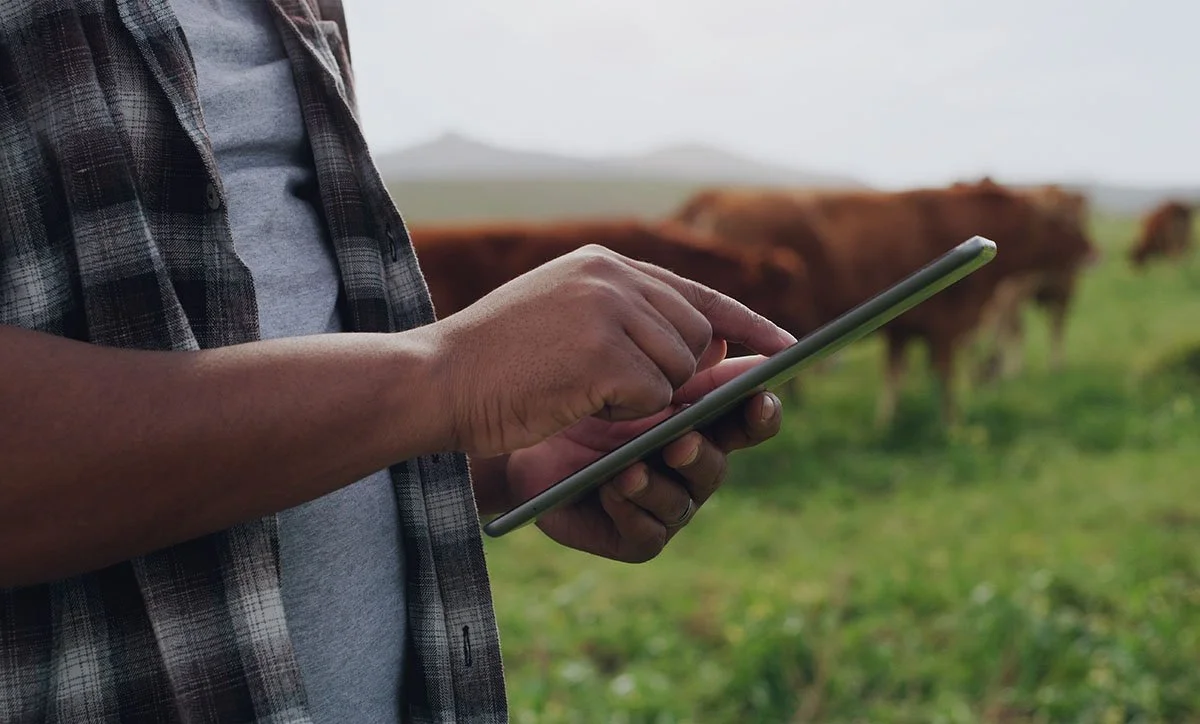Navigating the digital shift in farm management.
Digital technology is rapidly changing the way we farm and in ways that are impossible to ignore. For many in the agricultural sector, the move toward digital farm management brings with it a unique mix of promise and pressure. On one hand, tools like precision agriculture offer new levels of efficiency, accuracy and regulatory compliance. On the other, they demand new ways of thinking, working and handling ever-growing amounts of data.
Where digital tools are making the biggest impact
Fertiliser and nutrient management are one of the clearest examples of where digital tools are transforming how things are done on-farm. In the past, these applications often relied on a mix of experience and gut feel. Now, modern tools make it possible to apply nutrients with greater accuracy, optimising crop performance while reducing waste and protecting the environment.
By combining data from soil sensors, satellite imagery and localised weather forecasts, these systems can tailor applications to specific conditions in each paddock. The result? Higher yields, lower input costs, and improved compliance with regulations around nitrogen use and water quality.
The challenge - connecting the dots
While the benefits are real, so too are the challenges. As more digital tools are introduced, the amount of data generated on-farm is increasing dramatically. Pulling together data from soil sensors, climate apps, crop monitors and compliance platforms can quickly become overwhelming, especially when they operate in silos.
That’s where integration becomes key. To make the most of digital transformation, farmers and contractors need systems that talk to each other. When data is centralised and easy to access, it’s far more useful – supporting smarter decision-making, better nutrient planning, and easier reporting.
Why compliance is driving change
There’s also growing pressure from regulators to manage nutrient use more carefully, particularly nitrogen. Across New Zealand and beyond, water quality is under the spotlight and historical nutrient use is being replaced by a more data-driven, accountable approach.
Today’s tools allow farmers to monitor application rates in real time, generate proof of placement records and stay ahead of compliance requirements. That’s good for the environment, good for productivity and helps future-proof farm businesses in a tightening regulatory space.
Turning data into action
To get the most from digital transformation, it’s not just about having the tools – it’s about using them well. Here are a few practical steps to help farms and rural contractors navigate this shift:
Review your current systems – understand what digital tools you already use and where your data is coming from. Are these systems integrated? Can they work better together?
Identify your compliance needs – with nitrogen use under increasing scrutiny, having reliable records is no longer optional. Make sure your tools can support proof-of-placement and environmental reporting.
Look for practical platforms – tools like the Spreadify app from Precision Farming bring everything together in one place, turning your phone or tablet into a simple, user-friendly guidance and job management system.
Seek out flexibility – whether you use Trimble, TopCon, John Deere or something else entirely, it’s worth exploring platforms that connect with a range of equipment and service providers. The goal is to make your system work for you, not the other way around.
Don’t forget the 3G shutdown - it's coming fast
As digital systems become more important to farm operations, connectivity is more critical than ever. With the nationwide shutdown of 3G networks well underway, farmers and contractors who rely on older guidance units, sensors or data modems may find themselves caught out if they don’t act soon.
Many legacy devices and telemetry systems still depend on 3G to transmit data. Once those networks are switched off, starting from late 2025, those tools will simply stop working unless upgraded. This can impact everything from nutrient tracking and job recording to health and safety communications.
If you’re unsure whether your hardware will be affected, now’s the time to check. The upside? This transition is also an opportunity to reassess your current tech setup and invest in future-ready solutions that offer faster, more reliable performance on modern 4G and 5G networks.
Precision Farming can help you make a smooth transition, whether that’s upgrading your current hardware, connecting with your existing guidance system, or simplifying compliance with one easy-to-use platform.
Planning ahead
Digital transformation doesn’t have to be overwhelming. With the right tools and support, farmers can take advantage of smarter systems, stay ahead of regulation and build a more sustainable, productive future for their operations.
Got questions about 3G shutdowns, data integration, or compliance-ready nutrient tools? Give us a call on 0800 477 001 – we’re here to help keep your farm connected, compliant and one step ahead.

